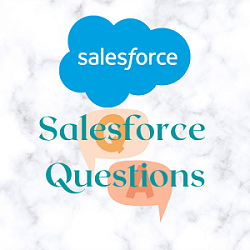1. What are the benefits of using LWC over traditional JavaScript frameworks?
LWC (Lightning Web Components) has several benefits over traditional JavaScript frameworks. Some of them are -
- Modern web standards: LWC is built using modern web standards like HTML, CSS, and JavaScript. This makes it easier to get started with LWC development.
- Lightweight and fast: LWC has a small footprint, which means it can be loaded and executed quickly. This results in faster page load time and a better user experience.
- Modular architecture: It allows developers to build reusable and maintainable components, this saves a lot of time and effort in the long run.
- Compatibility with Salesforce: LWC is fully compatible with the Salesforce platform, which allows the building of custom components that integrate easily with Salesforce applications and data.
- Powerful tools and resources: LWC has a robust set of tools and resources available, (like - a powerful IDE, comprehensive documentation, and an active community of developers), this makes it easier to learn and use LWC, and to get help and support when needed.
2.What are decorators? List some built-in decorators provided by LWC.
Decorators is a feature in modern JavaScript that allows annotating and modifying or adding some additional functionalities to classes and class members, like - properties and methods. Using decorators in LWC, we can define and modify the behaviour of components.
There are some built-in decorators provided by LWC that we can use to define properties and methods in components:
- @api: This annotation is used to define a public property that can be accessed by other components.
- @wire: This annotation is used to connect a component to an Apex method or a wire adapter.
- @track: This annotation defines a reactive property that causes the component to re-render when the property changes.
- @trackMap: This annotation defines a reactive map that causes the component to re-render when the map is modified.
- @trackArray: This annotation defines a reactive array that causes the component to re-render when the array is modified.
- @apiMethod: This annotation defines a public method that can be called by other components.
- @wireMethod: This annotation is defined to connect a component to an Apex method or a wire adapter and returns the result as a reactive property.
Basic LWC Concepts:
- What are Lightning Web Components (LWC) and how do they differ from Aura components?
- Describe the LWC component folder structure.
- How do you share JavaScript code between LWC components?
Data Binding & Component Communication:
- How do you bind data in an LWC template?
- Explain the difference between
@track,@api, and@wire. - How can you communicate between parent and child components in LWC?
Salesforce Specific:
- How do you call an Apex method from an LWC?
- Describe how you'd use the
@wiredecorator with an Apex method. - How can you fetch records in LWC without using Apex?
LWC Lifecycle:
- Describe the lifecycle hooks available in LWC.
- What is the sequence in which the lifecycle hooks are called?
Testing and Debugging:
- How do you write unit tests for LWC?
- Describe how you'd debug an LWC.
- What tools or techniques do you use for debugging LWC in the Salesforce environment?
UI/UX in LWC:
- How do you ensure your LWC is mobile responsive?
- Describe how you'd handle form validation in LWC.
- How can you include external CSS or JavaScript libraries in LWC?
Performance & Best Practices:
- What are some best practices for improving performance in LWC?
- How do you handle large data sets or lists in LWC?
- Describe how client-side caching works in LWC.
Integration & Events:
- How would you integrate an LWC with a third-party service?
- Describe how you handle events in LWC. What is event propagation?


0 Comments
Post a Comment